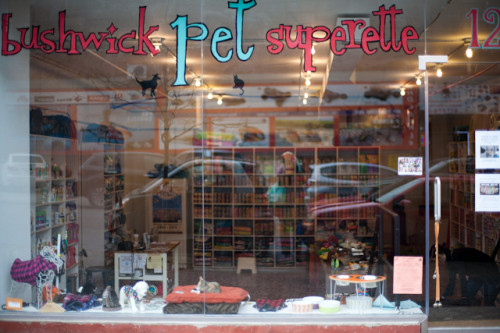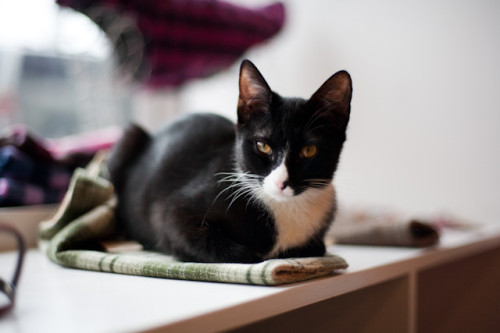Mar. 27, 2013 ? Electronic computing speeds are brushing up against limits imposed by the laws of physics. Photonic computing, where photons replace comparatively slow electrons in representing information, could surpass those limitations, but the components of such computers require semiconductors that can emit light.
Now, research from the University of Pennsylvania has enabled "bulk" silicon to emit broad-spectrum, visible light for the first time, opening the possibility of using the element in devices that have both electronic and photonic components.
The research was conducted by associate professor Ritesh Agarwal, postdoctoral fellow Chang-Hee Cho and graduate students Carlos O. Aspetti and Joohee Park, all of the Department of Materials Science and Engineering in Penn's School of Engineering and Applied Science.
Their work was published in Nature Photonics.
Certain semiconductors, when imparted with energy, in turn emit light; they directly produce photons, instead of producing heat. This phenomenon is commonplace and used in light-emitting diodes, or LEDs, which are ubiquitous in traffic signals, new types of light bulbs, computer displays and other electronic and optoelectronic devices. Getting the desired photonic properties often means finding the right semiconducting material. Agarwal's group produced the first ever all-optical switch out of cadmium sulfide nanowires, for example.
Semiconducting materials -- especially silicon -- form the backbone of modern electronics and computing, but, unfortunately, silicon is an especially poor emitter of light. It belongs to a group of semiconducting materials, which turns added energy into heat. This makes integrating electronic and photonic circuits a challenge; materials with desirable photonic properties, such as cadmium sulfide, tend to have poor electrical properties and vice versa and are not compatible with silicon-based electronic devices.
"The problem is that electronic devices are made of silicon and photonic devices are typically not," Agarwal said. "Silicon doesn't emit light and the materials that do aren't necessarily the best materials for making electronic devices."
With silicon entrenched as the material of choice for the electronics industry, augmenting its optical properties so it could be integrated into photonic circuitry would make consumer-level applications of the technology more feasible.
"People have tried to solve this problem by doping silicon with other materials, but the light emission is then in the very long wavelength range, so it's not visible and not very efficient and can degrade its electronic properties," Agarwal said. "Another approach is to make silicon devices that are very small, five nanometers in diameter or less. At that size you have quantum confinement effects, which allows the device to emit light, but making electrical connections at that scale isn't currently feasible, and the electrical conductivity would be very low."
To get elemental, "bulk" silicon to emit light, Agarwal's team drew upon previous research they had conducted on plasmonic cavities. In that earlier work, the researchers wrapped a cadmium sulfide nanowire first in a layer of silicon dioxide, essentially glass, and then in a layer of silver. The silver coating supports what are known as surface plasmons, waves that are a combination of oscillating metal electrons and of light. These surface plasmons are highly confined to the surface where the silicon dioxide and silver layers meet. For certain nanowire sizes, the silver coating creates pockets of resonance and hence highly confined electromagnetic fields -- in other words, light -- within the nanostructure.
Normally, after excitation the semiconductor must first "cool down," releasing energy as heat, before "jumping" back to the ground state and finally releasing the remaining energy as light. The Penn team's semiconductor nanowires coupled with plasmonic nanocavities, however, can jump directly from a high-energy excited state to the ground state, all but eliminating the heat-releasing cool-down period. This ultra-fast emission time opens the possibility of producing light from semiconductors such as silicon that might otherwise only produce heat.
"If we can make the carriers recombine immediately," Agarwal said, "then we can produce light in silicon."
In their latest work, the group wrapped pure silicon nanowires in a similar fashion, first with a coating of glass and then one of silver. In this case, however, the silver did not wrap completely around the wire as the researchers first mounted the glass-coated silicon on a sperate pane of glass. Tucking under the curve of the wire but unable to go between it and the glass substrate, the silver coating took on the shape of the greek letter omega -- ? -- while still acting as a plasmonic cavity.
Critically, the transparent bottom of the omega allowed the researchers to impart energy to the semiconductor with a laser and then examine the light silicon emitted.
Even though the silicon nanowire is excited at a single energy level, which corresponds to the wavelength of the blue laser, it produces white light that spans the visible spectrum. This translates into a broad bandwidth for possible operation in a photonic or optoelectronic device. In the future, it should also be possible to excite these silicon nanowires electrically.
"If you can make the silicon emit light itself, you don't have to have an external light source on the chip," Agarwal said. "We could excite the silicon electrically and get the same effect, and we can make it work with wires from 20 to 100 nanometers in diameter, so it's very compatible in terms of length scale with current electronics."
The research was supported by the U.S. Army Research Office and the National Institutes of Health.
Share this story on Facebook, Twitter, and Google:
Other social bookmarking and sharing tools:
Story Source:
The above story is reprinted from materials provided by University of Pennsylvania.
Note: Materials may be edited for content and length. For further information, please contact the source cited above.
Journal Reference:
- Chang-Hee Cho, Carlos O. Aspetti, Joohee Park, Ritesh Agarwal. Silicon coupled with plasmon nanocavities generates bright visible hot luminescence. Nature Photonics, 2013; 7 (4): 285 DOI: 10.1038/nphoton.2013.25
Note: If no author is given, the source is cited instead.
Disclaimer: Views expressed in this article do not necessarily reflect those of ScienceDaily or its staff.
Source: http://feeds.sciencedaily.com/~r/sciencedaily/matter_energy/electronics/~3/U1h28iUkbn4/130327133517.htm
chris carpenter dick cheney hcg drops reason rally mad hatter azerbaijan ryan howard




